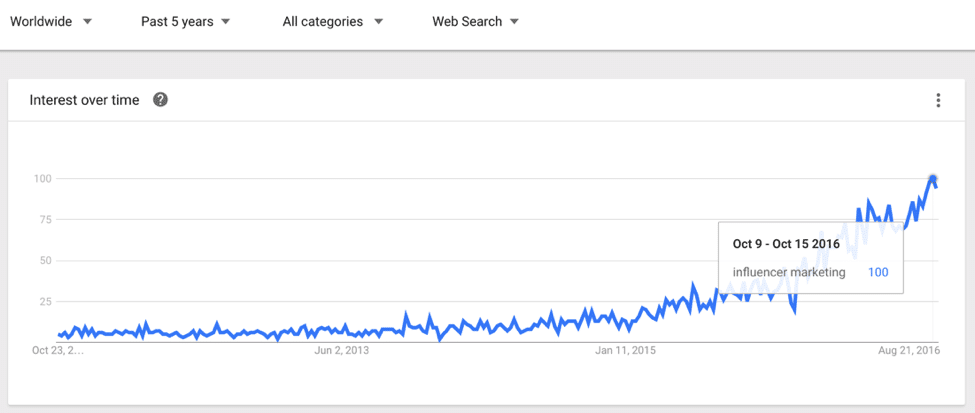At its most basic level, marketing is about selling something, whether that be a product, service, organization, idea, position or something else. In terms of goods and services, if you don’t hear the cha-ching, something’s gone wrong. When profitable outcomes have gone awry, it’s important to look up and down the sales funnel to identify where the challenge stems from. Often the problem occurs at the top, particularly for established businesses that have marketing set on autopilot. When marketers neglect the top of the funnel, the bottom of the funnel ” conversions, in other words ” will suffer. In the case of B2B companies, the lifecycle of a customer can be extremely lengthy; an empty funnel will require an extended period of time to replenish with prospects and nurture those prospects into customers.
Companies often approach AIMCLEAR after they’ve discovered a declining sales pipeline. We recently advised a client on a situation highlighting the importance of top-of-funnel marketing. This post takes a closer look at the company’s situation, the impact of an empty funnel and tactics for filling the top of the funnel. Let’s dive in.
The case of the dwindling leads
Marketers for a B2B organization were concerned that the company’s overall sales leads and opportunities were down, and they were trying to understand the key drivers behind the decline. The AIMCLEAR team performed a variety of analyses across paid search, social, marketing automation, Webmaster Tools and Google Analytics to identify the culprit.
First, we checked out paid brand keyword traffic to investigate a rise in CPA and decline in leads. The data speaks for itself. Paid impressions were 50 percent lower in September compared to January for brand searches, despite impression share consistently being 95 percent or greater. Conversions were down 90 percent and CPCs were up 171 percent.
Holy tomatoes, Batman!
It’s worth quickly highlighting a couple points that impacted paid search performance:
- CPCs were increasing and impressions/clicks were decreasing (while impression share remained consistently above 95 percent); in short, brand traffic was costing more per click, and receiving less volume. The decline in demand is the real problem; an increase in bidding aggressiveness would not inherently generate more demand
- Changes to the company’s website in February/March contributed to a decline in the conversion rate
Digging further, the decline was not only impacting paid results; organic, direct and referral traffic and leads were also down.
The company’s SEO visibility had been consistently declining over the past several months.
Further investigation uncovered a variety of sources contributing to this decline:
- Website changes around February/March impacted SEO visibility
- Direct traffic was down more than 24 percent
- Email nurture campaigns slowed considerably and traffic to the website from email was down 70 percent
- Paid display was down 90 percent (intentional, but still a driver of lower brand awareness)
The findings were astounding, and the cause of the decline pointed to an area of investment that is often overlooked and takes time to rectify: The top of the funnel was empty and the result was a decline in brand appetite. The empty funnel was impacting a variety of channels and sales opportunities.
Why top of funnel is important
A sales funnel is often used to depict the buying journey of prospects. In most inbound marketing circles, the term awareness is used to describe the top portion of the funnel. We prefer attraction, a more active, emotional term. By definition, awareness is to be conscious of someone or something. Certainly you need to be aware of something to be attracted to it, but if there’s just awareness and no attraction, are you actually in the sales funnel? In any case, attracting potential customers to what you have to offer, thus dropping them in the top of the funnel, is important for several reasons.
First, the top of the funnel keeps the pipeline consistently full. The top is the foundation of your pipeline. Without steady efforts to attract visitors to your website, the funnel will collapse. If visitors cease frequenting the store, purchase activity will decline and, ultimately, sales will stop altogether.
Second, the top of the funnel fills a need or provides a potential solution to challenges customers face. This is where consumers are doing their research, seeking education about the solutions available on the market. Leads are typically less valuable at the top of the funnel because they have not been qualified. However, this is where brands can captivate these prospective customers with a compelling offer and provide helpful content that may help nurture them into the middle part of the funnel.
Lastly, top-of-funnel marketing sets the stage for advanced customer segmentation. Marketers can test messages across varying audiences, gauge interest and use learnings to drive the persona development process. Brands can leverage responses at the top of the funnel to gather data and organize it in a way that segments customers based upon varying needs. This data can later be used in the middle and bottom of the funnel.
Tactics for filling the top of the funnel
In Hubspot’s State of Inbound 2016 report, 53 percent of the professionals surveyed assert that the root of their challenges are in generating demand at top of the funnel, not the middle or bottom of the funnel.

Since top-of-funnel marketing plays a critical role in keeping the sales pipeline full, yet so many people struggle with prospecting, it’s no wonder this question is often asked: How do you do it?
The top-of-funnel stage is meant to attract new potential visitors and, ultimately, business, so the tactics deployed should center around educating unqualified prospects. Let’s review specific tactics that can be used to fill the funnel with prospects.
Content marketing
The most common form of top-of-funnel content marketing is blogging. Blog content can cover a vast array of content themes, appeal to a wide range of audiences and should be optimized for SEO. The blog is the single most important content marketing initiative, and with the right blogging strategy, any company with a website can maintain and grow the breadth of audiences that visit its site. The content needs to provide value to the user. While there are technical approaches to semantic optimization that will enhance search engine visibility, the determining factor to a blog’s success is whether the content provides relevant information to users.
Some examples of blog content that perform well for top-of-funnel marketing are listicles, infographics, how-tos and articles that contain video content. A listicle is a short form of writing that breaks down the content into a digestible list format (e.g. 10 Excel Marketing Ninja Moves). Infographics are another solid format to leverage on the blog. Infographics quickly capture an audience’s attention; they tell a story through a visual medium in a manner that can make your content more understandable. Videos are also an effective medium to educate and inform potential audiences.
Commitment to the blog and a solid onsite optimization strategy will help you get free visitors to your site, but this likely will not be sufficient to fill the prospect funnel on its own. To increase awareness, promote your content through social media channels with psychographic segmentation. Social media channels are a fantastic method for driving relevant, targeted visitors to your website. Engaging audiences in their feed with relevant content is a great first-touch event. Once a user has landed on your site, the data you have from their visit can be used to reach users on a variety of devices and mediums.
Psychographic segmentation allows brands and marketers to splice their audiences based upon various affinities, proclivities, values, interests and lifestyles. Unlike demographics, which is how the U.S. census defines us, psychographics gets to the root of who we are, or how our friends and family define us. A leading benefit of using psychographic targeting is that creative development engages audiences based upon who they are, and messages can be tailored accordingly.
For a deeper understanding of platform-specific targeting capabilities, check out our Social Psychographic Targeting Stack–Up.
Google Display
Expanding beyond social, Google AdWords is a great place to generate brand awareness and drum up initial interest. The Google AdWords tool is incredibly diverse. For some brands and marketers, it’s a one-stop shop for accomplishing their needs from the top of the funnel to the sale. Through Google Display Network, you can create engagement ads, video ads, pop-out ads that drive strong brand awareness, or even run old-school display banners through the content network. Various targeting options apply here as well:
- Contextual targeting: Show your ads to users based upon the type of content they are consuming
- Placement targeting: Show ads on specific websites you choose or websites your customers visit
- Interest categories: Target users based upon their interests and whose behavior shows they share a common interest
- Topic targeting: Show your ads on sites that are related to the topic selected
- Geographic and language targeting: Target any geo and reach only speakers of the language you select
- Demographic targeting: Show ads to users based upon their age or gender
Public relations & influencer marketing
What’s more credible: self-proclaiming your greatness, or having a reputable third-party proclaim your greatness? The answer is obviously the latter, and it can be accomplished through public relations and influencer marketing.
Public relations is a broad discipline; media relations ” the practice through which companies earn media coverage ” is a subset, albeit the one most commonly associated with PR. Companies can increase awareness of and interest in the organization and its products/services via news coverage. Coverage can be achieved by:
- Doing something newsworthy (to state the obvious)
- Commenting on an emerging, hot or seasonal trend/issue/story
- Promoting a new product or service
- Placing a contributed article or case study in an industry trade
- Winning an award, particularly those associated with a publication
Most, if not all, news outlets promote their content to current and potential subscribers via social, email and other mediums, exposing organizations featured in the content to new audiences. In addition to this exposure, a company could also promote the content via social to psychographic segments of interest.
Speaking at events, conferences and webinars can also acquaint prospects with your company and its offerings, as well as position key executives as thought leaders on a given subject (which makes them more likely to become a source for reporters on that subject).
Influencer marketing, while a relatively new term, is not a new strategy. Word of mouth and referrals in traditional marketing has evolved into influencer marketing in the digital age. See the snapshot below depicting the rise of influencer marketing interest over the past few years.
Image: Google Trends
Influencer marketing can increase trust and authenticity for a brand. A 2015 report from Nielsen on trust in advertising states that 83 percent of consumers say they completely or somewhat trust the recommendations of friends and family. Sixty-six percent say they trust consumer opinions posted online.
The art of influencer marketing is getting your content in front of like-minded, influential individuals in hopes they’ll share it, comment on it or otherwise provide the content directly to their audience base. This exposure can increase brand awareness and attract new potential customers.
From dwindling leads to kindling leads
The client data outlined at the beginning of this post shows a declining performance at the top of the funnel, which impacted various channels at the bottom of the funnel. The company’s lead time ranges from two months up to two years, with the lengthiest part of the program being the nurturing of leads that enter the funnel.
To right the ship, we coordinated with the company to put a full-court press plan into place, implementing the tactics below:
- Develop gated content pushed out monthly
- Develop four to five supporting blog posts
- Promote content via paid social to new audiences
Given the lengthy sales cycle, new customers aren’t rolling in the door just yet, but below are initial highlights that indicate a promising turnaround. Over the last 30 days:
- New users are up 128 percent
- Organic search sessions are up 11 percent
- Sessions from direct traffic are up 3.5 percent
- Social sessions are up 56 percent
- Sessions from other sources are up 55 percent
From a short-term perspective, it may seem more beneficial to optimize the overall budget by limiting spend at the top of the funnel, but in the long run, limiting investment in prospecting will drive up overall acquisition costs. Wise marketers know that a well-oiled sales pipeline depends on keeping the top of the funnel full with marketing tactics designed to attract the right prospective customers.
















